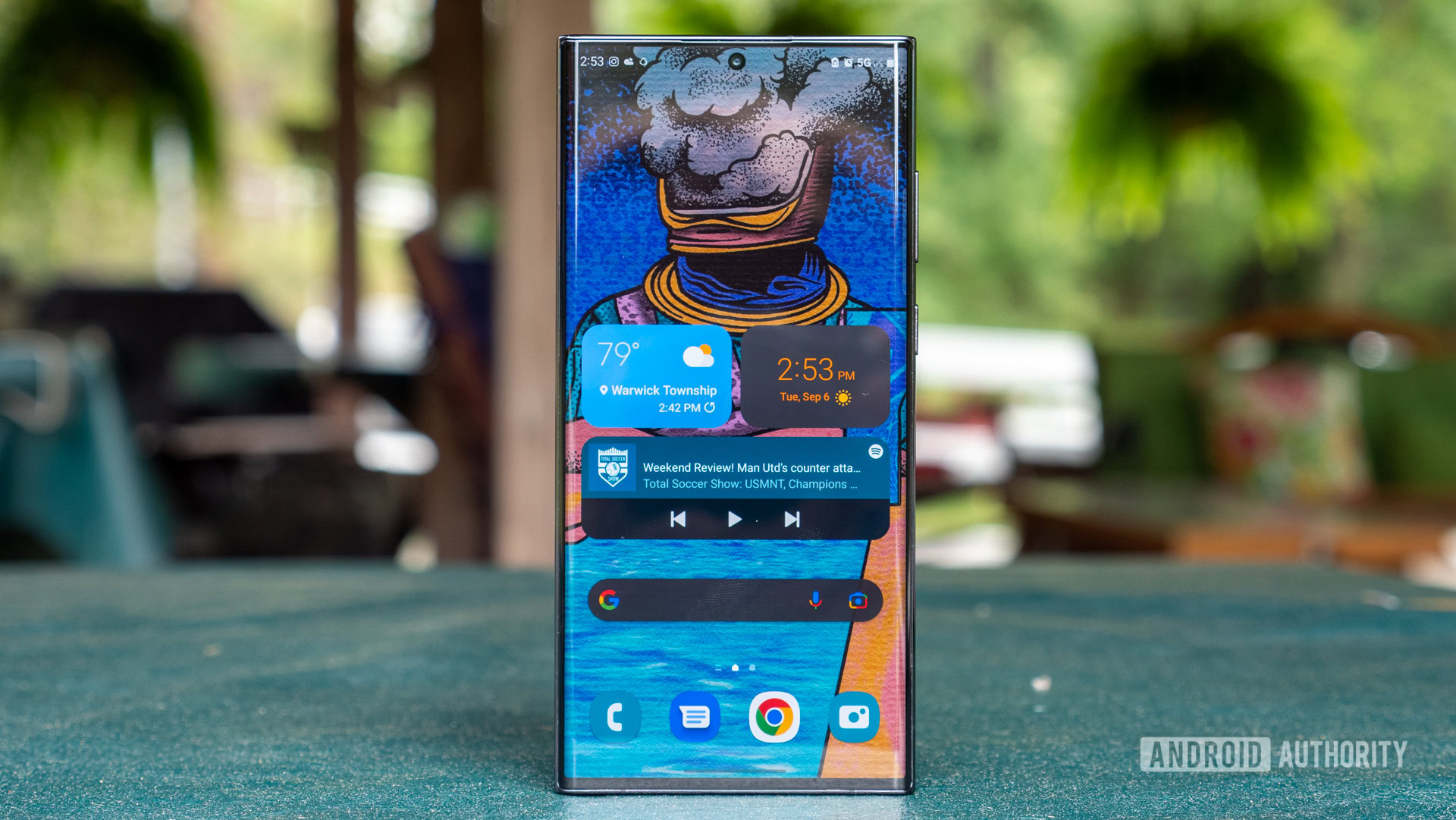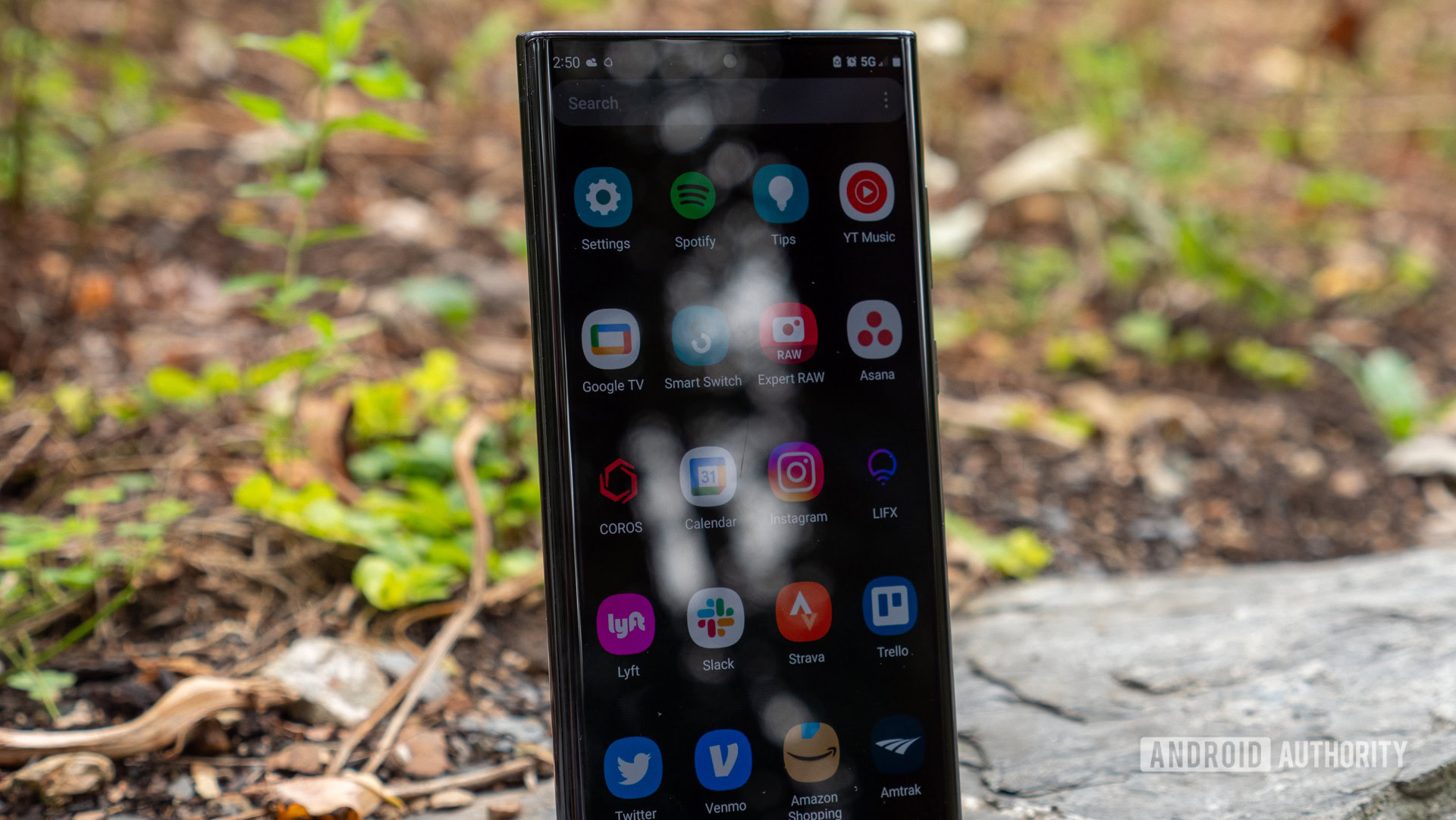Affiliate links on Android Authority may earn us a commission. Learn more.
What is One UI Home? A guide to Samsung's launcher
Published onFebruary 12, 2025

Every Android smartphone or tablet has a launcher, whether the default OEM launcher or a third-party app you’ve installed. The launcher lets you set up the user interface exactly how you like it, with custom wallpapers, icons, widgets, fonts, modes, themes, and much more. If you’ve used a recent Samsung phone or tablet, you are likely familiar with One UI Home without knowing precisely what it is. So what is One UI Home? Here’s everything you need to know about Samsung’s default launcher.
QUICK ANSWER
One UI Home is Samsung's default launcher available on Android phones and tablets that run any version of One UI. The system launcher lets you change the look of the home screen, add and remove widgets, set up modes and themes, adjust how the app drawer works, and more.
JUMP TO KEY SECTIONS
What is One UI Home?

Samsung has always had its own take on the Android user interface. Following TouchWiz and Samsung Experience, the company first introduced One UI, based on Android 9 Pie, in 2018 to make one-handed operations easier on its larger devices. It also brought exciting features such as a dark mode and more. As the years have gone on, Samsung has continued to add more features. The latest version, One UI 7, based on Android 15, is currently available for the Galaxy S25 series and will come soon to most of its active flagships.
All Android phones have a launcher, and Samsung’s launcher, part of its One UI overlay, is called One UI Home. The launcher lets you customize various aspects of the phone’s home screen. You can add widgets, change how app notifications appear, and adjust the look and feel of the app drawer, to name a few.
How to get One UI Home
One UI Home is an OEM launcher only available on Samsung devices running any version of One UI. You will not be able to download or install One UI Home on non-Samsung devices through the Google Play Store.
Settings and features
How to open One UI Home settings
You can find the One UI Home settings by going to Settings > Home screen.
If you’re looking for permission settings and other options, go to Settings > Apps > One UI Home.
How to change the home screen and app drawer layout
The One UI Home settings let you change the home screen. You can set your home screen layout to include an app drawer or make it an iPhone-esque look with all the apps on the home screen. If you have a lot of apps on the home screen or plan to use widgets, you can adjust the home screen grid layout. You can also change the grid layout of the app drawer and folders.
Enable Google Discover on One UI Home
Use the Add media page to Home screen setting to set the media page you’ll see when you swipe right from the home screen. Google Discover is enabled by default, and you can change it to Samsung Free. You can also turn off this feature.
App settings
If the app drawer is enabled, you must swipe up from the bottom of the screen to open it. Instead, you can toggle on Show apps screen button on Home screen to add an app drawer button at the bottom right corner of the page for easier access. Other app settings include the option to lock the home screen layout so nothing gets moved or removed by mistake. You can also set it to add any apps you’ve installed to home screens directly.
You can enable App icon badges to see which apps have pending notifications. Set it to Number to see exactly how many notifications you have, or select Dot for a general idea. With One UI Home, you can touch and hold the app icon to see notifications if you don’t want to open the app. The setting is disabled by default. Go to Settings > Home screen > App icon badges and enable Notifications on app icons to get this feature.
How to add widgets on One UI Home
Long press anywhere on the home screen and tap on the Widgets button at the bottom of the screen. Pick a widget you want to add from the many options like Bixby routines, Google Photos, Gmail, Clock, Netflix, Calendar, Contacts, and more. Once you select the widget, press and hold it and drag it to the home screen. You can resize the widget to fit the home screen. Change the home screen layout if you don’t have enough room.
Change the wallpaper on One UI Home
Press and hold anywhere on the home screen and tap the Wallpaper and style button at the bottom of the page. Tap on My wallpapers to change the home screen and lock screen wallpapers. You can also use images you’ve downloaded or photos from your gallery by going to the Gallery option.
You can also set a dynamic lock screen to see a new wallpaper whenever you tap on the phone. Go to Wallpaper and style > Lock screen wallpaper services and enable Dynamic lock screen.
You can change the color palette of the user interface, including apps, the notification panel, and app icons.
How to change the One UI Home theme
Press and hold anywhere on the lock screen and tap Themes to go to the Galaxy Themes page. You’ll see plenty of paid and free options. Pick a theme and tap Download to install a theme. A theme will completely change the look of the user interface, from the wallpaper to app icons.
Other settings and features
Other home screen settings include the ability to swipe down anywhere on the home screen to open the notification panel. This is a valuable feature for one-handed use, so you don’t have to reach across to the top of the phone. Finally, you can set whether the UI should switch to landscape mode when you rotate the phone.
One UI Home problems
Many Samsung users learn that One UI Home is a system app when they notice it on the phone’s battery usage list. One of the biggest problems with One UI Home is rapid battery drain. Go to Settings > Apps > One UI Home > Battery and select Optimized or Restricted to reduce the app’s battery usage. If you’re still seeing a problem with high battery drain, your only option is to wait for an update or download a third-party launcher.
When your home screen is lagging or completely unresponsive, force restart the phone by pressing and holding the power button. If you can, go to Settings > Apps > One UI Home > Storage and tap Clear cache and Clear data. If that doesn’t work, go to Settings > Apps > One UI Home and tap on Force stop.
FAQs
One UI Home is a system app on Samsung devices, so you cannot uninstall or disable it. If you are facing problems with using the launcher, go to Settings > Apps > One UI Home and tap on Force stop to reset and restart the launcher.
Go to Settings > Apps > Storage and tap on Clear cache and Clear data.